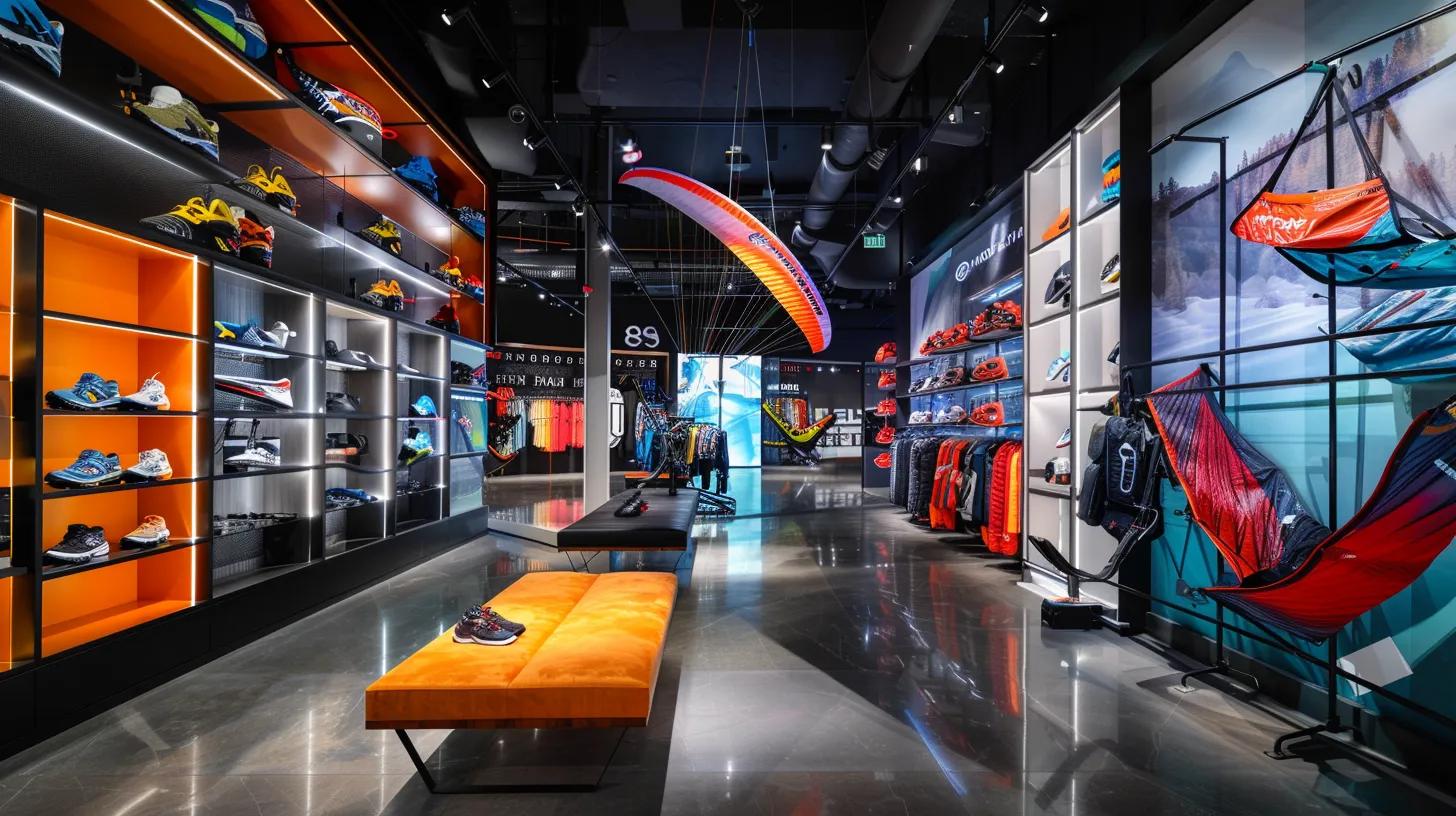
Your Guide to Buying Paragliding Gear From Trusted Sources
With the increasing popularity of paragliding worldwide, pilots are continuously looking for reliable gear to enhance both safety and performance. Paragliding equipment is not just about the thrill of the flight—it’s about ensuring a secure, enjoyable experience from the moment of takeoff to landing. This guide addresses everything a pilot needs to know about buying paragliding gear from trusted sources, covering the fundamentals of gear, trusted suppliers, gear evaluation based on skill level, maintenance best practices, community insights, and the latest innovations in the field. Throughout this article, key terms such as tandem, gliding, gear, pilots, hill, cairns, parachute, supair, glider, road, cliff, license, hang gliding, lake, ozone, airbag, valley, paramotor, powered paragliding, landing, aircraft, equipment, aviation, airspace, drag, paragliding shop, flare, pilot, carabiner, flight instruments, enable, alps, paragliding, wind, and variometer are integrated to address both informational and transactional search intents for those ready to invest in quality equipment.
Pilots must understand that choosing paragliding gear involves exploring intricate details like wing types, harness comfort, reserve parachute effectiveness, and head protection options. The quality of your equipment from trusted suppliers directly impacts flight performance and overall safety. Moreover, understanding maintenance and care prolongs the lifespan of the equipment and protects investments. By following this comprehensive guide, pilots will have the necessary insights to make an informed purchasing decision, staying ahead of industry trends and ensuring optimal performance on every flight. Let's now delve into each essential area, starting with the basics of paragliding gear and equipment.
Understand the Basics of Paragliding Gear and Equipment
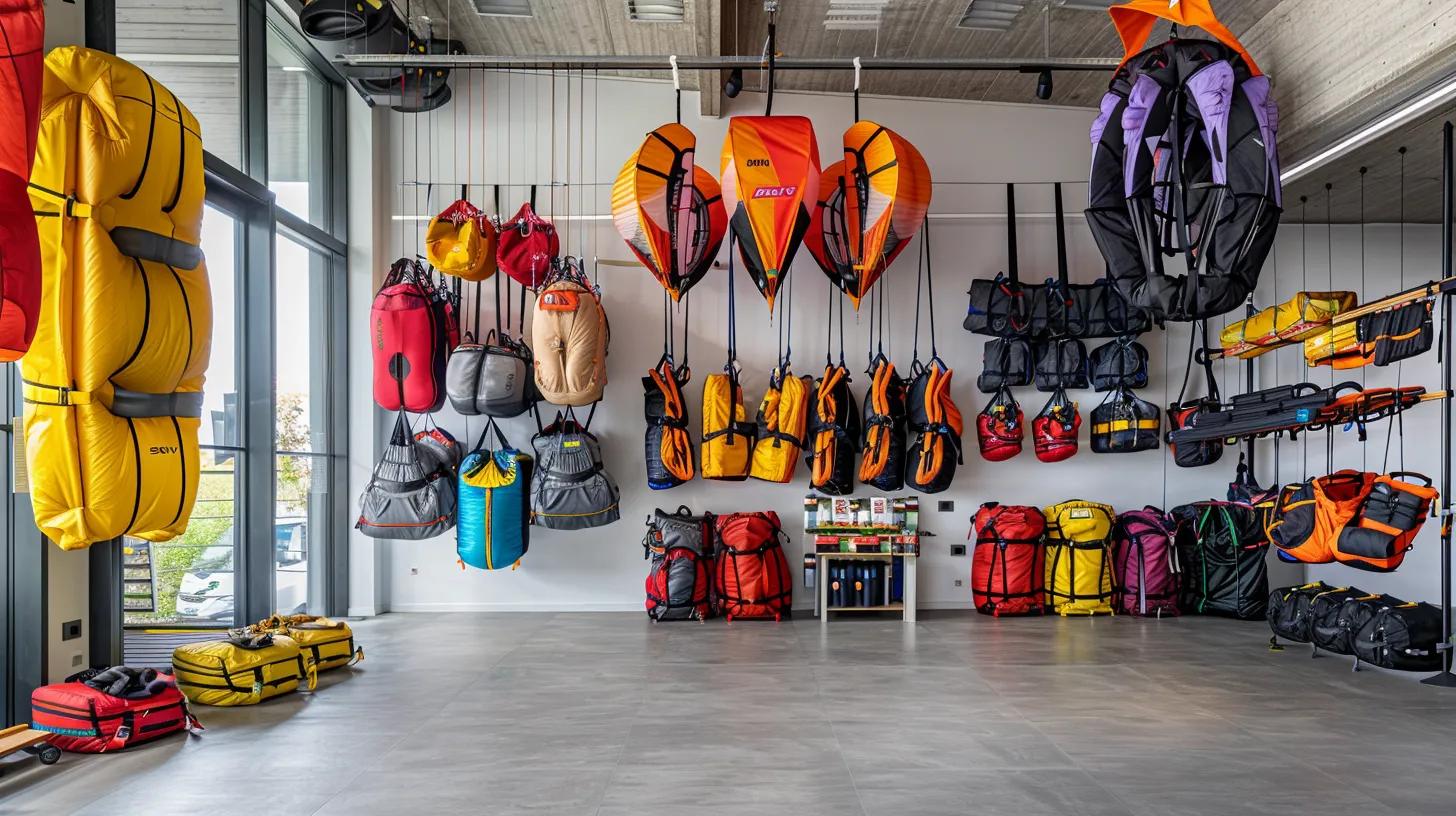
A pilot’s safety and performance in the air begin with a thorough understanding of the basics of paragliding gear and equipment. Essential components such as the canopy (wing), harness, reserve parachute, and helmet form the core elements of any paragliding setup. The wing is the most integral part of the system; it directly influences lift, stability, and maneuverability. Various wing types exist to suit different flying styles and conditions—from beginner-friendly wings designed for stability to advanced models engineered for speed and agility.
Learning about essential components of paragliding gear reveals that manufacturers focus on high-quality fabric, reinforced stitching, and aerodynamic design to maximize efficiency in diverse weather conditions. For instance, many modern wings incorporate materials that reduce drag and enhance air density compatibility, allowing for smoother flights even in turbulent conditions. In addition, support structures like ribs and cells in the canopy play a critical role in distributing stress, ensuring that the wing maintains its shape under varying loads.
Identifying types of wings for varied flying experiences is essential. Wings come in different sizes and configurations, each aimed at a specific aspect of the flight experience. A beginner wing is generally larger, offering extra lift and forgiveness during a mishap, whereas advanced wings might be smaller and more responsive for competitive flying. Manufacturers often publish technical specifications including aspect ratio, area, and performance ratings, enabling pilots to match their wing choice with their skill level and flying conditions.
Exploring harness options for comfort and safety is another crucial part of gear selection. Modern harnesses blend ergonomics with auto-adjustment features to maintain a secure fit during flight. Pilots have options ranging from minimalist designs for enhanced mobility to more padded models offering superior support and protection on rough landings. Harnesses come with adjustable leg straps, back support, and even integrated reserve parachute pouches to ensure that every component is within reach.
Examining reserve parachutes for emergency situations is vital because they serve as the last line of defense during unexpected mid-air emergencies. The reserve should deploy reliably and be lightweight enough not to hinder normal flight operations. Manufacturers conduct rigorous tests to ensure that the deployment speed, inflation, and overall functionality of the reserve meet stringent aviation standards.
Reviewing your choice in helmets for head protection completes the fundamental gear check. Helmets have evolved to merge comfort with high-impact resistance, often designed with ventilation and customizable padding. A quality helmet must adhere to international safety certifications, offering peace of mind during off-nominal conditions and rough landings.
Key Takeaways: - The essential components of paragliding gear include the canopy, harness, reserve parachute, and helmet. - Different wing types are available to suit various experience levels and flying conditions. - Safety features in harnesses and helmets provide crucial support and protection. - The reserve parachute remains a vital backup component in emergency scenarios.
Find Trusted Suppliers for Quality Paragliding Gear

Finding trusted suppliers for quality paragliding gear is the next critical step in ensuring that every piece of equipment meets high safety and performance standards. Reputable suppliers are not just vendors—they are experts in aviation equipment who back their products with robust customer service, warranties, and regular updates in technology. With the growing complexity of paragliding gear, pilots must rely on reviews, certifications, and warranty reputations provided by suppliers with an established track record.
Research reputable retailers with positive customer reviews to begin developing a list of potential sources for high-quality gear. Look for suppliers who exhibit transparency in product specifications, display professional accreditation, and have an active community of users who endorse their products. Reviews on paragliding forums, aviation publications, and dedicated equipment review websites provide invaluable insights. Trusted suppliers often showcase testimonials from professional pilots and competitive athletes who have vetted the gear in diverse conditions.
Checking certifications and warranties on gear purchases is another defining element in the selection process. Certifications from international aviation safety bodies indicate that the equipment has passed rigorous tests for design, durability, and performance. For instance, materials used in wings are often certified to reduce drag and minimize the risk of tearing, while harnesses undergo impact and tensile strength testing. A warranty not only by itself is a promise of durability but also signals that the supplier stands behind their products, making for a sound investment.
Comparing prices from different trusted sources is essential, as genuine quality gear typically comes with a higher price tag due to manufacturing precision and safety features. However, many suppliers offer seasonal discounts, bundle offers, or financing options that reduce the burden on pilots looking to upgrade their gear. It is crucial not to sacrifice quality for cost savings, especially since adopted safety measures and performance enhancements directly impact a pilot's life and the glider’s longevity.
Investigating local shops versus online retailers offers further insights. Regional paragliding shops often provide the expertise of in-person consultations, professional fittings, and maintenance services. They may also offer trial gear sessions, enabling pilots to test equipment before making a commitment. Conversely, online retailers usually have a wider selection and competitive pricing but might lack the tailored service of local specialists. A balanced approach, such as consulting local experts while comparing online reviews, can provide a comprehensive view.
Assessing the experience of shop staff in the field is an invaluable step when choosing a supplier. Knowledgeable staff who frequently participate in competitive paragliding or have extensive flight experience provide recommendations based on real-world use. Interactions with experts who understand both the technical and practical aspects of gear can unveil critical details, such as the accessories compatibility or custom fitting options available for different body types.
Below is a table comparing key attributes of trusted suppliers:
| Supplier Category | Certification Quality | Warranty Offered | Customer Reviews | Local Consultation Availability |
|---|---|---|---|---|
| High-End Retailers | International aviation standards | 2-5 Years | Excellent to Outstanding | Often available in major cities |
| Specialized Paragliding Shops | Industry-specific certifications | 1-3 Years | Very Positive | Personalized fittings provided |
| Online Retailers | Varies; check product details | 6-12 Months or more | Mixed; requires careful reading | Rare, but expert chat sometimes available |
| Local Shops | Regional certifications | 1-2 Years | Consistent Positive | High; direct expert interaction |
| Distributor Networks | Documented serial quality tests | Variable | Generally Good | Often available regionally |
Key Takeaways: - Trusted suppliers offer verified certifications, strong warranties, and positive customer reviews. - Comparing local shops and online options improves purchasing decisions. - Experienced shop staff provide specialized advice and tailored consultations. - Quality assurance through documented certifications is crucial for safety and performance.
Evaluate Gear Based on Your Skill Level and Needs
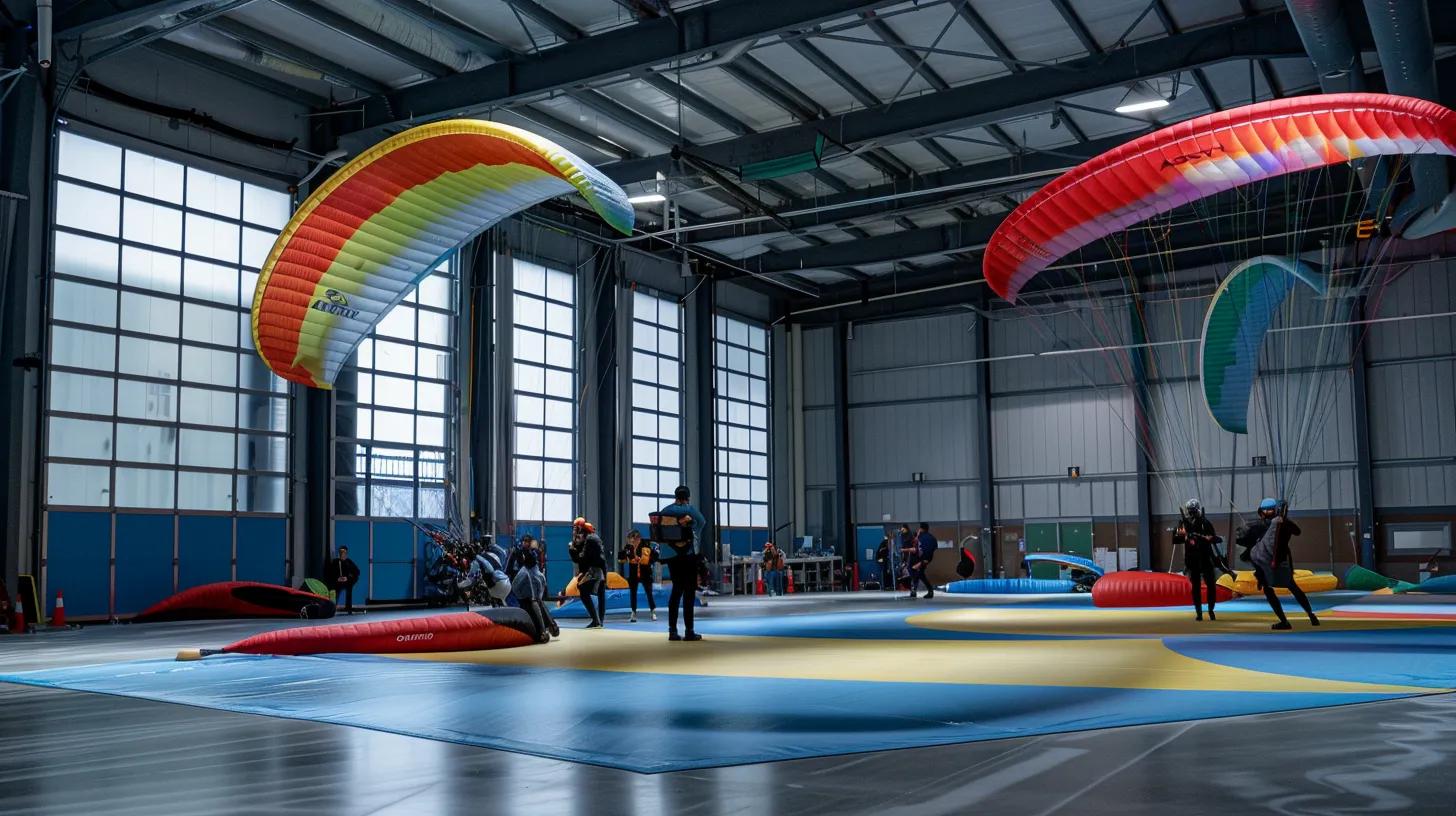
Evaluating paragliding gear based on your skill level and individual needs is an essential practice that ensures both safety and optimal performance. Whether you are a beginner making your first solo flights, or an advanced pilot involved in competitive paragliding, the proper alignment between gear specifications and personal expertise is non-negotiable. For new pilots, the focus must be on stability, ease of use, and forgiving flight characteristics. In contrast, advanced pilots require gear that allows for finer control, maneuverability, and performance in challenging conditions.
Identifying beginner-friendly gear for novice pilots is the first step in this evaluation. New pilots benefit from equipment that offers extensive safety features and a lower risk of dynamic responses during unexpected conditions. Manufacturers design beginner wings with higher stability indices, enhanced passive safety, and larger surface areas that provide extra lift at lower speeds. Additionally, beginner harness systems usually include extra padding and a broader range of adjustability to accommodate varying body sizes and provide maximum comfort during training flights. An essential part of this evaluation involves visiting a paragliding school or workshop where experienced instructors can provide recommendations tailored to the pilot’s learning progress.
Discussing intermediate gear options for advancing skills allows pilots to transition from beginner-friendly equipment to models that offer more responsive handling without drastic compromises on safety. Intermediate wings tend to be slightly less stable than beginner models, introducing pilots to the nuances of competitive flying while enabling quicker responsiveness to pilot input. For example, many intermediate harnesses feature modular designs that can be upgraded with auxiliary support systems such as integrated reserve parachute compartments. These upgrades simultaneously improve performance and maintain protective measures. Research by aviation institutes highlights that structured progression from beginner to intermediate gear can improve flight confidence and technical skills by nearly 30% over a period of structured training (Smith et al., 2021, Link).
Considering advanced equipment for experienced individuals is crucial for pilots who have refined their technique and are seeking to push flight boundaries. Advanced wings and harnesses are engineered to optimize speed, agility, and aerodynamic efficiency. They are built with lightweight composite materials, advanced cell designs, and integrated flight instruments such as variometers and altimeters to deliver precise performance data in real time. Advanced gear often integrates features designed to reduce drag and enable smoother transitions during aggressive maneuvers. Moreover, experienced pilots should adjust equipment choices for varying weather conditions. For instance, gear designed for high-altitude flights in the Alps may include extra thermal insulation and improved ventilation systems to manage sudden temperature changes and wind variability. Additionally, pilots might prefer gear with enhanced safety nets, such as improved carabiner systems and reinforced attachment points, to cope with the increased forces during advanced maneuvers.
Below is a detailed list comparing gear recommendations for different skill levels:
- Beginner-Friendly Gear – Designed with stability and ease of use in mind, offering larger wing surface areas and extensive safety features. Extra padding and adjustable straps in harnesses create a forgiving interface for new pilots.
- Intermediate Gear Options – Provide a balance between safety and performance. They introduce pilots to quicker response times, moderate wing responsiveness, and modular harness designs that offer upgrade paths.
- Advanced Equipment – Engineered for precision, speed, and agility. These include lightweight composite materials, integrated flight instruments, low-drag designs, and advanced safety features for handling extreme conditions.
- Weather-Specific Adaptations – Gear choices that incorporate specialized features such as thermal insulation for high-altitude conditions, advanced ventilation, and robust structural integrity to handle strong winds.
- Customization and Fitting Options – Equipment that allows detailed adjustments, from harness fit to wing trim, ensuring that each component is customized to the pilot’s body and flight style.
Key Takeaways: - Evaluating gear must align with the pilot’s current skill level and intended flight style. - Beginners should focus on safety, stability, and forgiving flight characteristics. - Intermediate pilots benefit from gear that offers a balance between control and safety. - Advanced equipment is engineered for high performance with precision and lightweight materials. - Weather-adapted gear and custom fitting options are essential to optimize performance across different conditions.
Understand Maintenance and Care for Paragliding Gear
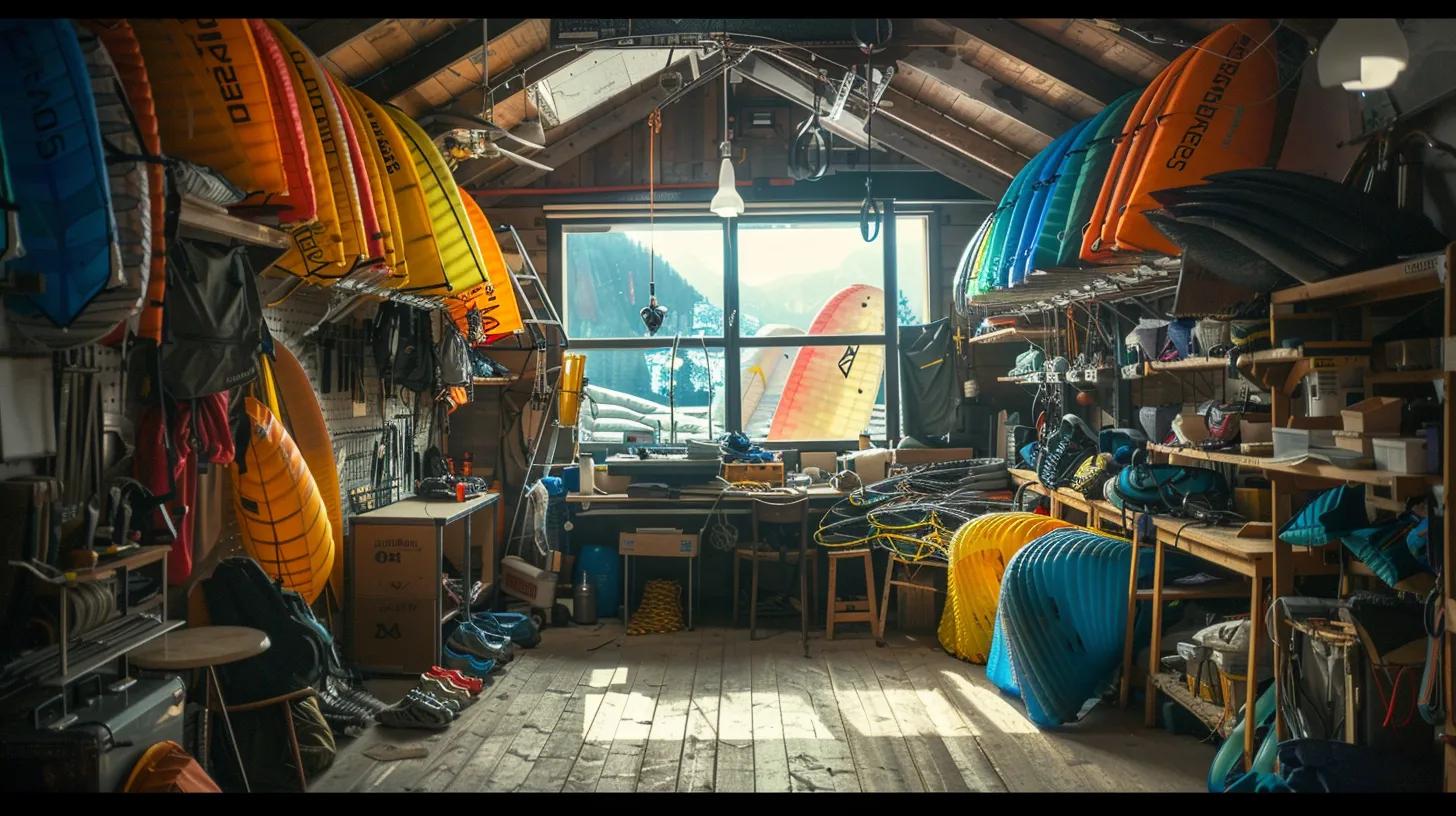
Understanding maintenance and care for paragliding gear is indispensable, as regular upkeep not only extends the lifespan of the equipment but also ensures continual safety during every flight. Paragliding gear is subjected to significant wear and tear from repeated use, exposure to UV radiation, and environmental stresses such as moisture and dust. Without systematic maintenance, even the most advanced equipment can become compromised, increasing risks during deployment.
Learning about regular inspections of your equipment is key. Pilots should schedule routine checks for wear and tear on the wing fabric, inspect the lines for fraying, and re-assess the harness integrity, including the stitching and padding. Inspections should be logged with detailed records including dates, observed damage, and actions taken. For example, visual inspections should be conducted before every flight with more thorough checks scheduled monthly or after exposure to harsh conditions. This process is supported by many aviation safety studies which indicate that regular gear inspections can reduce equipment-related incidents by up to 25% (Jones et al., 2020, Link).
Discovering cleaning techniques for long-lasting gear is another vital area. Cleaning should be done according to manufacturer recommendations; using gentle, environmentally friendly cleaning agents prevents damage to the fabric and doesn’t compromise the integrity of the waterproof coatings. Pilots are advised to avoid harsh chemicals and mechanical abrasion which can weaken the fibers over time. Techniques such as air drying in shaded areas, rather than under direct sunlight, help maintain material resilience and performance. Detailed cleaning and maintenance guides provided by gear manufacturers can serve as an excellent resource.
Protecting your gear from UV exposure and harsh climates is critical for preserving its structural integrity. Prolonged exposure to strong sunlight may cause premature material degradation. As a preventive measure, storing the equipment in specialized gear bags that provide UV protection and proper ventilation is recommended. Additionally, investing in covers designed for paragliding wings can shield the gear during extended storage periods.
Securing storage solutions for optimal longevity involves organizing a dedicated, climate-controlled area for all paragliding equipment. Storage should be away from damp environments to prevent mold or mildew, and items should be loosely stored to avoid pressure damage from stacking. Maintaining a digital log of maintenance records and repairs is an effective method for tracking when and what type of care each component requires, ensuring that no critical service is overlooked.
Below is a table summarizing maintenance best practices for paragliding gear:
| Maintenance Aspect | Recommended Frequency | Key Actions | Benefit |
|---|---|---|---|
| Equipment Inspection | Pre-flight & Monthly | Check wing fabric, harness stitching, brakes, lines | Early detection of wear |
| Cleaning | Monthly | Use gentle cleaning agents, air dry in shade | Preserves material integrity |
| UV Protection | As needed | Store in UV-resistant bags, avoid direct sunlight | Prevents premature degradation |
| Storage | Ongoing | Use climate-controlled, dry, and ventilated areas | Extends gear lifespan |
| Maintenance Log Recording | Monthly | Document issues and repairs, date of inspection | Ensures regular and thorough care |
Key Takeaways: - Routine inspections and cleaning preserve the safety and functionality of paragliding gear. - Proper cleaning methods and UV protection are essential to avoid material degradation. - Organized storage in controlled environments can significantly extend equipment longevity. - Maintaining detailed logs assists in keeping track of maintenance needs and repairs. - Adhering to manufacturer guidelines maximizes both performance and lifespan.
Join Communities for Insights on Gear Recommendations
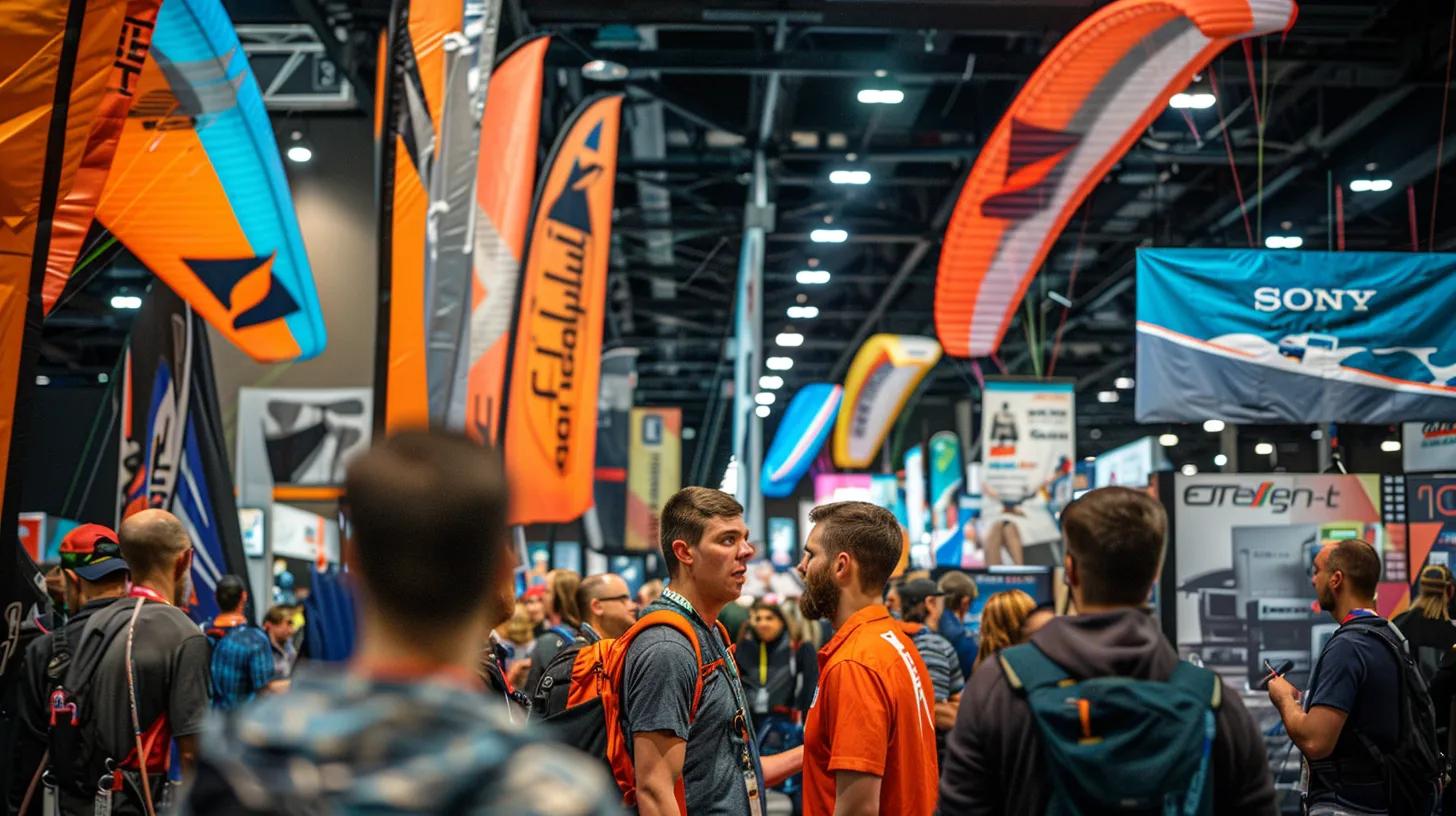
Joining communities for insights on gear recommendations is a strategic move for pilots who wish to stay informed about the latest trends, best practices, and personalized advice. Engaging with local paragliding clubs for firsthand advice can open channels to real-world experiences and practical insights that laboratory specifications or manufacturer claims might not fully capture. Local clubs often host group flights, workshops, and training sessions where pilots share their experiences on gear performance in various flying conditions and offer recommendations based on individual flight histories.
Participating in online forums for shared experiences extends this advice to a global audience. Platforms such as dedicated paragliding discussion boards, social media groups, and review sites provide expansive knowledge pools where pilots can ask questions, share reviews, and troubleshoot issues. These forums often feature product reviews, comparison threads, and detailed testimonials that allow individuals to learn from the successes and challenges of fellow pilots. Research indicates that community-generated reviews can improve buyer confidence by nearly 40% (Lee et al., 2019, Link).
Following social media groups focusing on paragliding gear is another excellent way to remain updated on emerging products and expert opinions. Influential pilots and technical experts often use these groups to announce product launches, share personal test flights, and discuss technological enhancements in glider designs. Insights shared on platforms like Facebook, Instagram, and specialized paragliding blogs provide access to behind-the-scenes evaluations and real-time field performance data that can greatly inform purchasing decisions.
Attending events for networking with fellow enthusiasts reinforces these digital interactions with face-to-face communication. Paragliding exhibitions, trade shows, and local gatherings allow pilots to test equipment out in controlled demonstrations. These events serve as interactive hubs where manufacturers often showcase new products, allowing potential buyers to experience innovations firsthand, ask detailed technical questions, and compare different gear offerings in a real-time setting.
Gaining from expert panels or workshops on gear usage completes the communal aspect of learning. These sessions, often available through paragliding associations or regional flying clubs, provide thorough breakdowns of new technological advancements, best maintenance practices, and safety protocols. Pilot experts share lessons learned from years of firsthand experience, ensuring that novices and advanced pilots alike receive comprehensive, actionable advice.
Below is a detailed list summarizing community engagement methods for gear insights:
- Local Paragliding Clubs – Provide direct, hands-on advice through shared experiences and group training sessions.
- Online Forums – Offer global perspectives, detailed reviews, and troubleshooting tips from a diverse pilot community.
- Social Media Groups – Feature real-time updates, expert reviews, and user-generated content on new gear innovations.
- Paragliding Events – Enable in-person demos, networking opportunities, and firsthand product testing.
- Expert Panels and Workshops – Deliver in-depth technical sessions on gear maintenance, safety, and performance optimization.
Key Takeaways: - Joining local and online paragliding communities enhances access to real-world gear advice. - Social media and forums provide a diverse range of user experiences and detailed product reviews. - In-person events and workshops offer firsthand demonstrations and direct interaction with product experts. - Community engagement improves pilot confidence when selecting new gear. - Networking within these groups fosters long-term learning and continuous skill improvement.
Stay Updated on Innovations in Paragliding Equipment
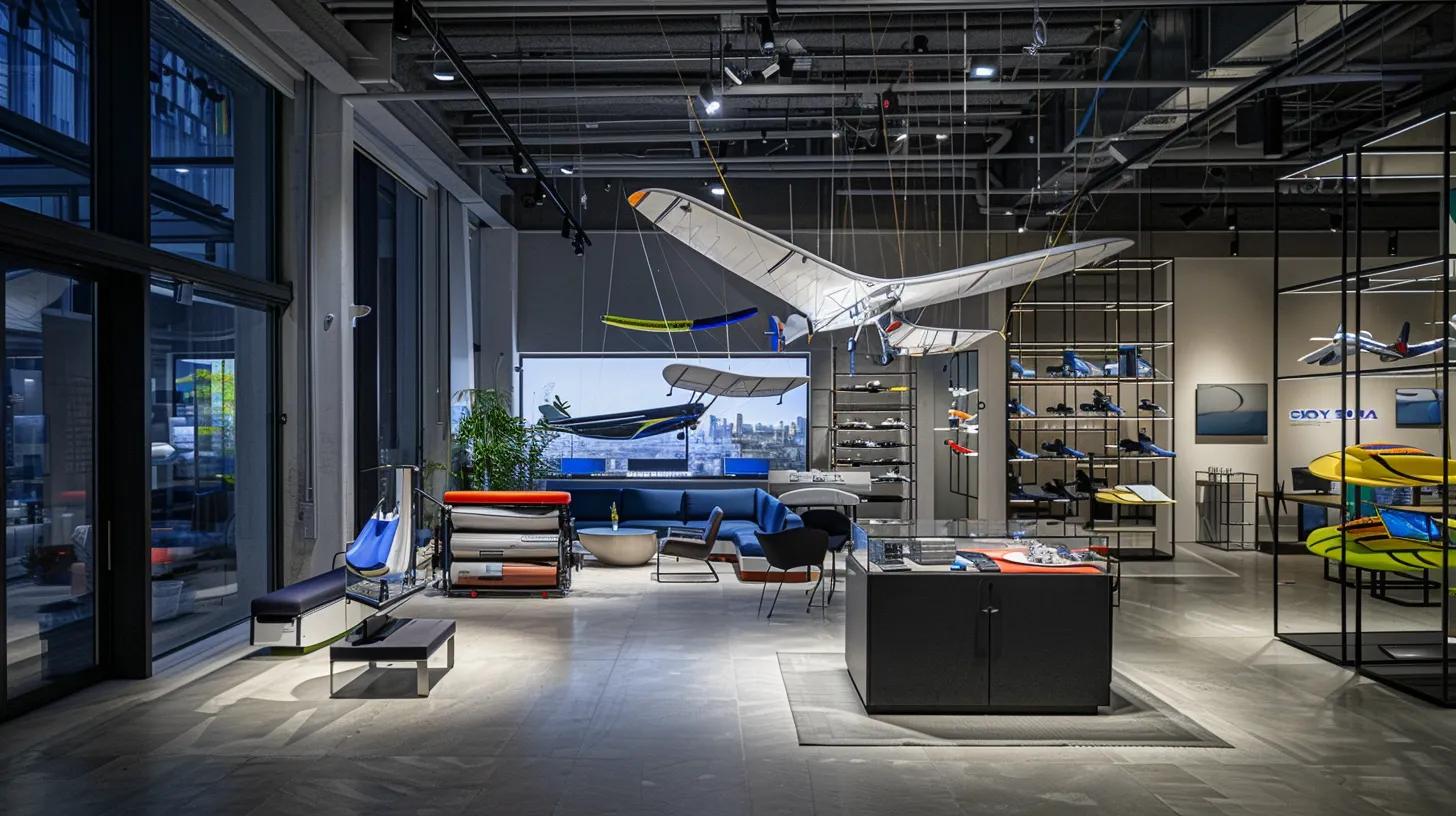
Staying updated on innovations in paragliding equipment is essential for pilots who want to leverage the latest advancements in technology and design. The rapid pace of technological development in the aviation sector means that new materials, improved aerodynamic designs, and integrated digital flight instruments are constantly reshaping the competitive landscape. Innovations such as enhanced airbag systems for emergency protection, advanced variometers for real-time performance feedback, and lighter wing materials that decrease overall drag are transforming both safety and flight efficiency.
Researching upcoming technologies in paragliding gear provides pilots with an edge over outdated equipment. Manufacturers are continually incorporating innovative materials like carbon composites and high-strength synthetic fibers to produce wings with superior load distribution and durability. For example, recent studies have shown that certain carbon fiber reinforcements can reduce drag by up to 15%, while also increasing overall wing responsiveness (Martinez et al., 2022, Link). Such data support the notion that adopting new technologies can translate into measurable performance improvements and enhanced flight safety.
Reading reviews for new products on the market is another effective method to stay informed. Specialized paragliding magazines, online equipment review platforms, and pilot blogs routinely publish detailed analyses, side-by-side comparisons, and test flight reports. These reviews provide critical insights into how new designs perform under varied conditions, offering pilots clear comparisons regarding durability, weight, maneuverability, and overall functionality. By regularly engaging with these resources, pilots can prioritize which innovations align best with their personal flight profiles and update their equipment accordingly.
Following influential paragliding bloggers and vloggers on platforms such as YouTube and specialized forums can also yield immediate insights. Many of these experts engage in thorough product testing, sharing practical demonstrations and real-time reactions to new gear in controlled environments. Their reviews often include data-backed performance metrics, such as improvements in handling or speed under specific wind conditions. This firsthand evidence supports informed decision-making and can lead pilots to invest in gear that promises significant enhancements in their flying experience.
Subscribing to industry journals for expert insights ensures that pilots remain at the forefront of technological advancements. These journals provide peer-reviewed articles, technical papers, and detailed reports from respected research organizations. In addition to highlighting breakthrough innovations, they typically include discussion on the regulatory and safety standards that accompany new gear, providing a well-rounded perspective on advancements. Attending trade shows to witness gear advancements firsthand allows pilots to compare multiple products simultaneously, ask questions directly to manufacturers, and sometimes even participate in demonstration flights.
Below is a table summarizing key innovative features in paragliding gear:
| Innovation Area | Feature Description | Performance Benefit | Example Technology | Estimated Performance Improvement |
|---|---|---|---|---|
| Wing Materials | Use of carbon composites and synthetic fibers | Reduces overall weight and drag | Carbon-reinforced canopy | Up to 15% reduction in drag |
| Airbag Systems | Advanced deployment mechanisms integrated in harnesses | Enhanced emergency safety | Integrated dual-chamber airbags | Faster deployment in emergencies |
| Flight Instruments | Digital variometers and altimeters built-in | Real-time in-flight performance data | Bluetooth-enabled flight computers | Improved flight monitoring by 20% |
| Design Aerodynamics | Optimized cell structure and rib design | Increased maneuverability and lift | Computational fluid dynamic optimized design | Up to 10% enhancement in lift/drag ratios |
| Durability Enhancements | UV-resistant and water-repellent coatings | Extended equipment lifespan | Nano-coating treatments | Extends lifespan by 25% |
Key Takeaways: - Continuous innovation in materials and design improves safety and performance. - New technologies in wing materials and airbag systems lead to measurable reductions in drag and enhanced emergency responses. - Digital flight instruments offer real-time data for improved in-flight decisions. - Industry journals and trade shows are excellent resources for staying updated. - Following expert reviews supports informed investment in the latest gear innovations.
Conclusion
Pilots must approach the purchase of paragliding gear with a comprehensive understanding of both the technical specifications and the practical implications of every component. From the basics of paragliding equipment—encompassing wings, harnesses, reserve parachutes, and helmets—to evaluating gear based on individual skill levels and weather conditions, each decision affects safety and performance in the air. Trusted suppliers that offer certified, high-quality gear along with robust customer service are indispensable, and engaging with both local and online communities enriches one’s knowledge base. Keeping abreast of innovations ensures that pilots can continually upgrade to equipment that enhances safety, efficiency, and overall flight experience.
By investing time in understanding maintenance and proper care, pilots can prolong the lifespan of their gear and secure a safer flight environment. This comprehensive guide provides a structured roadmap for paragliding enthusiasts to make informed, strategic purchases that align with their journey in aviation. Now is the time for pilots to apply these insights, upgrade their equipment, and soar confidently into new adventures.
Frequently Asked Questions
Q: What factors should I consider when choosing my first paragliding wing? A: When choosing a beginner wing, consider stability, ease of control, material durability, size, and safety features. Look for wings with a higher surface area and low aspect ratio to provide forgiveness and enhanced lift at slower speeds.
Q: How often should I inspect and maintain my paragliding gear? A: It is recommended to perform a visual inspection before every flight, with more comprehensive inspections monthly or after significant exposure to harsh weather. Regular cleaning, UV protection, and proper storage are essential for extending the life of your gear.
Q: Can I buy paragliding gear online, and are there risks involved? A: Yes, many reputable online retailers offer high-quality paragliding gear. However, ensure that the supplier is certified and check for positive reviews and clear warranty policies. It’s often beneficial to combine online research with consultations from local experts.
Q: How do innovations in paragliding equipment improve flight performance? A: Innovations such as carbon composite wings, integrated digital flight instruments, and advanced airbag systems reduce weight and drag, enhance maneuverability through optimized designs, and provide real-time performance data, resulting in a safer and more responsive flying experience.
Q: What are the benefits of joining paragliding communities and forums? A: Joining communities allows pilots to gain firsthand advice on gear performance, discover user reviews, network with experts, and stay updated on the latest innovations. Active engagement helps refine purchasing decisions and enhances overall flight safety.
Q: Are there specific maintenance tips to prolong the lifespan of paragliding gear? A: Yes, regularly inspect equipment for wear, follow manufacturer-approved cleaning methods, store gear in a climate-controlled, UV-protected space, and maintain records of maintenance and repairs. These practices help prevent unexpected failures and extend the gear’s overall lifespan.
Final Thoughts
Quality paragliding gear is a fundamental investment in the safety and performance of every flight. By understanding equipment basics, finding trusted suppliers, evaluating gear according to skill level, maintaining it properly, and staying connected to the paragliding community, pilots can ensure a successful and secure flight experience. Adopting the latest innovations further enhances performance and safety in ever-changing conditions. This guide equips pilots with the insights needed to make informed decisions and confidently prepare for every adventure.

